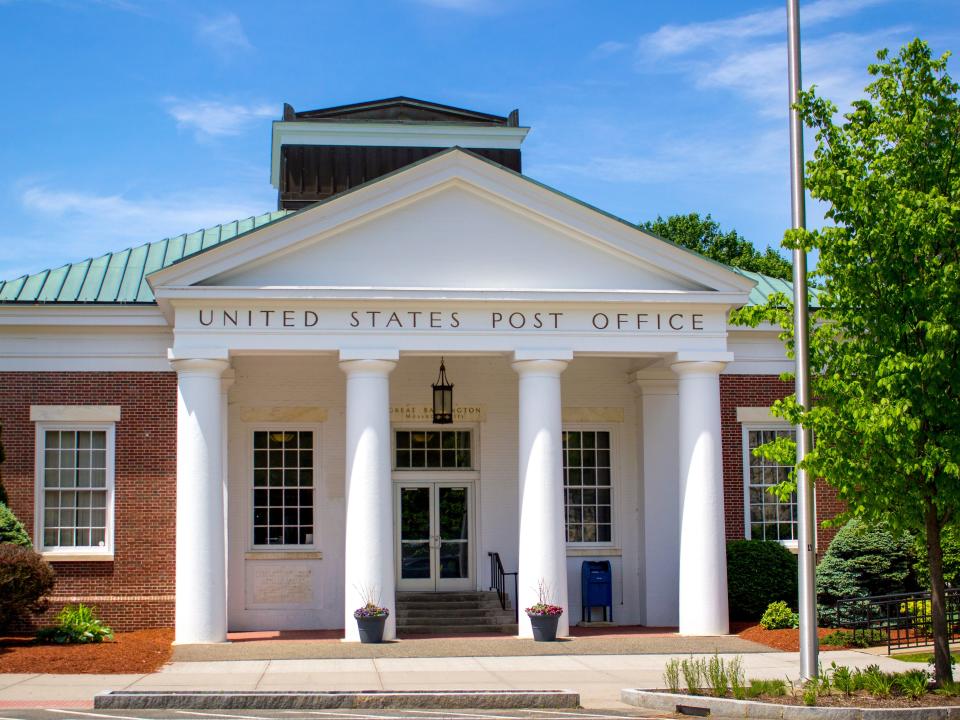Don't send checks through the mail, the post office is warning. Criminals are stealing more than ever.

Reports of check fraud have steadily risen since 2020, with stimulus checks becoming a target.
There were 680,000 reports of check fraud in the US in 2022, compared to 350,000 in 2021.
Scamming operations are sophisticated, multi-person schemes that banks are monitoring more closely.
Don't put checks in the mail, the US Postal Service is warning. Scammers are stealing more of them than ever — draining bank accounts and causing big headaches for banks and account holders.
Banks issued roughly 680,000 reports of check fraud last year, up from 350,000 reports in 2021. And the US Postal Inspection Service reported roughly 300,000 complaints of mail theft in 2021, more than double the prior year's total.
Early in the pandemic, government relief checks became an attractive target for criminals. The problem has only gotten worse and postal authorities and bank officials are warning Americans to avoid mailing checks if possible, or at least to use a secure mail drop such as inside the post office.
Check usage has been in decline for decades as Americans have largely switched to paying for their services with credit and debit cards. Americans wrote roughly 3.4 billion checks in 2022, down from nearly 19 billion checks in 1990, according to the Federal Reserve. But the average size of the checks Americans write rose from $673 in 1990 — or $1,602 in today's dollars — to $2,652 last year.
"Despite the declining use of checks in the United States, criminals have been increasingly targeting the US Mail since the COVID-19 pandemic to commit check fraud," the US Financial Crimes Enforcement Network wrote in an alert sent in February.
Checks are still frequently used by small businesses. Eric Fischgrund, who runs FischTank PR, a 30-person public relations firm in New York, had about 15 checks that were being mailed to him from clients stolen after they all went through the same Postal Service distribution center. Ten of them were successfully cashed by criminals.
The checks were stolen in March and Fischgrund became aware of the problem in April, when several of his clients who were never late missed payments. The Postal Service investigated and Fischgrund has recovered about 70% of the revenue, but some of the cases haven't yet been resolved.
According to the investigator on the case, the perpetrators used technology that melted ink in the "to" field of the checks so they could write in fake names.
Fischgrund said he'd never previously had an issue with check fraud in the nearly 10 years he has run his own business. Now he has a clause in invoices and new client contracts that asks for electronic payments only.
"I don't think we'll ever go back to asking for checks as an option," he said.
Today's check fraud criminals are not small operations, or lone individuals like the Leonardo DiCaprio character in the 2002 movie "Catch Me If You Can," counterfeiting checks from his hotel room and apartment. They are sophisticated criminal operations, with participants infiltrating post office distribution centers, setting up fake businesses or creating fake IDs to deposit the checks. "Walkers," or people who actually walk in to cash these checks, receive training in how to appear even more legitimate.
Criminals are getting the checks or identification information by fishing mail out of US postal boxes, looking for envelopes that appear to be either bill payments or checks being mailed.
The most common type of check fraud is what's known as check washing, where a criminal steals the check from the mail and proceeds to change the payee's name on the check and, additionally, the amount of money.
Some criminals are going further and using the information found on a check to gather sensitive personal data on a potential victim. There have been reports of criminals creating fake entities out of personal data obtained from a check, or even opening new lines of credit or businesses with that data as well. This allows fraudsters to create new checks using old account data.
Read the original article on Business Insider
